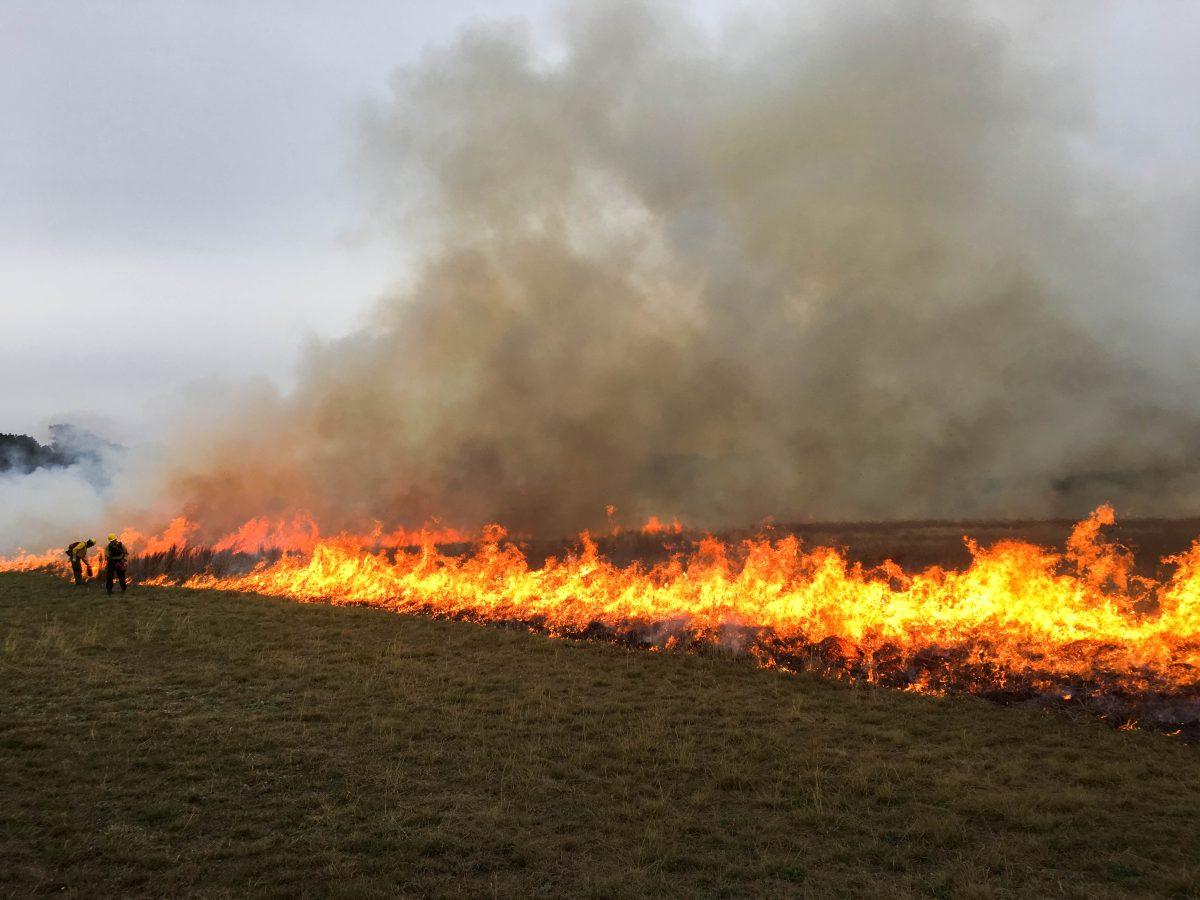There’s more to the story of forests and wildland fire than Smokey the Bear’s admonition “only YOU” can prevent wildfires.
Wildfire, or uncontrolled fire, and wildland fire, which includes prescribed burns, are both defined by experts as important environmental “disturbance factors” for maintaining landscapes, vegetation and species diversity.
Fire has been the “great maintainer” throughout earth’s history, explained wildland fire specialist Kevin Ferguson. Fire eradicates undesirable species and causes germination for some types of vegetation, Ferguson said, who works in the Texas Parks and Wildlife State Parks Division. Prescribed burns are necessary to mimic what a wildfire would have done hundreds of years ago because of the ways fire has affected the North American landscape, not in spite of it, he added.
A wildfire that destroyed 90 percent of Bastrop State Park in 2011 started in areas with no prescribed burns, said Chris Schenck, state and fire program leader for the Wildlife Division of the Texas Parks and Wildlife Department. Contrast that to prescribed burnings, Schenck explained, where the land is better and more palatable for vegetation and domestic and wild animals within a matter of weeks.
“In the areas that were treated with prescribed fire, there wasn’t that same understory build up,” Ferguson said. “Many areas in there we routinely treated with fire, and many we hadn’t, but the differences were drastic.”
Fire suppression over time leads to dense understories in forests, which then create volatile, lateral fuels, Ferguson said. These fuels burn to the treetops and are harder for firefighters to control, he noted.
Calmer, vertical fuels that stay low to the ground produce less-damaging effects, Ferguson said. While timber harvesting, thinning and grazing are all tactics to manage understories, Ferguson noted the most cost effective measure is prescribed burning.
“The realization that what fire does is a natural part of the ecosystem is what led to people burning the landscape trying to recreate what nature would do,” Ferguson said.
Native plains people observed vegetation and buffalo returning to areas after natural wildfires, which led to wildfires being called “red buffalo,” Schenck said.
Native peoples started cultural burning to mimic wildfires and bring the desirable results, including more feed for the buffalo they heavily depended on, he added. In the 1920s, state agencies depicted controlled burning as harmful and started fighting every fire instead of lighting them, Schenck said.
“We set ourselves up for a hundred years of suppression,” Schenck said. “Fire has been with us forever, but our reaction to it has been detrimental.”
Over time, no fire has created a huge shift in the type, density and distribution of fuels, Ferguson said. Amid the increased number and intensity of wildfires in Northern California, government officials are forging partnerships with tribal leaders to bring back “good fire” and allow traditional burning in tribes’ ancestral lands, according to npr.org.
Schenck described movements to return to the way of “red buffalo” as good for forests and the environment.
“Let fires burn,” Schenck said.
This story is a collaboration between The Battalion and upperclassmen in Texas A&M’s journalism degree. To see the online copy of the Climate Change extra print edition, click here.




















